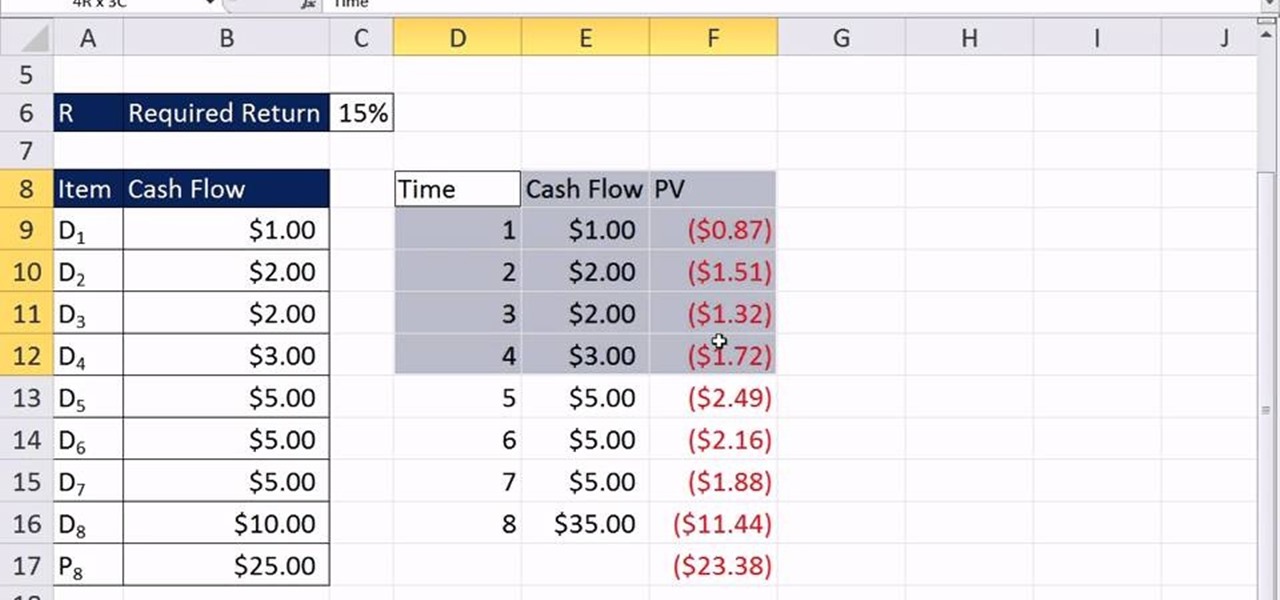

Finance
How Do You Stop Credit Card Offers In The Mail
Modified: March 3, 2024
Looking to stop credit card offers in the mail? Discover effective strategies to reduce unwanted finance-related mailings and protect your personal information.
(Many of the links in this article redirect to a specific reviewed product. Your purchase of these products through affiliate links helps to generate commission for LiveWell, at no extra cost. Learn more)
Table of Contents
- Introduction
- Why Do You Want to Stop Credit Card Offers in the Mail?
- The Negative Impacts of Credit Card Offers
- Legal Methods to Stop Credit Card Offers
- Method 1: Opt-Out via Phone or Online
- Method 2: Mailing Your Opt-Out Request
- Method 3: Freezing Your Credit
- Method 4: Using Third-Party Services
- Method 5: Opt-Out for Deceased Individuals
- Conclusion
Introduction
Are you tired of constantly receiving credit card offers in your mailbox? These unsolicited letters can be overwhelming, not to mention a potential privacy concern. If you’re wondering how to stop credit card offers in the mail, you’re not alone. Many individuals are looking for ways to reduce the amount of unwanted credit card solicitations they receive on a regular basis.
Credit card companies often send out these offers as a marketing strategy to attract new customers. While some people may find these offers beneficial, others may feel bombarded and want to opt out. Fortunately, there are legal methods to stop credit card offers and regain control over your mailbox.
In this article, we will discuss why you might want to stop credit card offers in the mail, the negative impacts of receiving these offers, and various legal methods you can use to put a stop to them. From opting out via phone or online, to mailing your opt-out request, freezing your credit, or using third-party services, we will explore the different options available to you.
By taking advantage of these methods, you can effectively reduce the number of credit card offers you receive, declutter your mailbox, and protect your personal information from falling into the wrong hands.
So, if you’re ready to regain control over your mailbox and put an end to those pesky credit card offers, let’s dive in and discover the steps you can take to stop credit card offers in the mail.
Why Do You Want to Stop Credit Card Offers in the Mail?
Receiving an overwhelming number of credit card offers in the mail can be quite bothersome. It’s natural to want to put a stop to these unsolicited offers for a variety of reasons:
1. Reduce Clutter: Credit card offers take up physical space in your mailbox and can quickly accumulate, leading to a cluttered and disorganized mailbox. By stopping these offers, you can regain control over your mailbox and create a more organized environment.
2. Privacy Concerns: Constantly receiving credit card offers may raise concerns about your personal information being shared or sold without your consent. Opting out of these offers can help protect your privacy and limit the amount of personal information circulating through the mail.
3. Time and Energy Saving: Sorting through unwanted credit card offers can waste time and energy that could be better spent on more important tasks. By putting a stop to these offers, you can save time and streamline your daily routine.
4. Financial Discipline: Being bombarded with credit card offers can tempt you to apply for new cards, even if you don’t need them. Ending these offers can help you maintain financial discipline and avoid unnecessary credit card applications.
5. Environmental Impact: The constant flow of credit card offers contributes to paper waste, which is harmful to the environment. By opting out of these offers, you can help reduce paper consumption and minimize your ecological footprint.
6. Avoid Temptation: Some individuals find it difficult to resist the temptation of credit card offers. By stopping these offers, you can avoid the temptation to accumulate unnecessary debt and maintain better control over your financial well-being.
7. Protect Against Identity Theft: Unwanted credit card offers can increase the risk of identity theft. If these offers fall into the wrong hands, they may provide fraudsters with the opportunity to open fraudulent accounts in your name. Stopping these offers can help safeguard your personal and financial information.
By understanding why you want to stop credit card offers in the mail, you can better prioritize and take action to put an end to them. In the following sections, we will dive into the various methods available to stop these offers and help you regain control over your mailbox.
The Negative Impacts of Credit Card Offers
While credit card offers may seem harmless, there are several negative impacts associated with receiving them in the mail. Understanding these impacts can further reinforce your desire to stop credit card offers. Let’s take a closer look at the potential drawbacks:
1. Financial Temptation: Credit card offers often entice individuals with attractive rewards, low interest rates, or promotional deals. These enticing offers can tempt people to apply for new credit cards, even if they don’t necessarily need them. This can lead to unnecessary debt and a potential strain on personal finances.
2. Unsolicited Access to Personal Information: When you receive a credit card offer, it typically contains personal information such as your name, address, and sometimes even your social security number. This raises concerns about the security and privacy of your personal data, as well as the potential for identity theft if these offers end up in the wrong hands.
3. Paper Waste: The constant influx of credit card offers contributes to paper waste and environmental degradation. These offers are often printed on glossy paper and encased in envelopes, resulting in unnecessary consumption of natural resources and energy. By reducing the number of credit card offers, you can contribute to a more sustainable environment.
4. Time and Energy Drain: Sorting through numerous credit card offers can be time-consuming and mentally draining. It takes valuable time and effort to review each offer, determine if it’s relevant, and dispose of unwanted materials. By minimizing the number of credit card offers, you can free up time and energy for more meaningful activities.
5. Increased Risk of Identity Theft: Unsolicited credit card offers can potentially expose you to an increased risk of identity theft. If these offers are mishandled or end up in the hands of fraudulent individuals, they may use your personal information to open fraudulent accounts or engage in other illicit activities. Protecting your personal information by minimizing exposure is crucial in maintaining identity security.
By recognizing the negative impacts of credit card offers, you can make a more informed decision to put a stop to them. The following sections will outline legal methods to opt out of these offers, allowing you to take control of your financial well-being and personal privacy.
Legal Methods to Stop Credit Card Offers
If you’re tired of receiving an overwhelming number of credit card offers in the mail, there are several legal methods you can use to put a stop to them. These methods not only help declutter your mailbox but also protect your privacy and streamline your daily routine. Let’s explore these methods:
1. Opt-Out via Phone or Online: One of the simplest ways to stop credit card offers is by opting out through the official channels provided by the credit bureaus. You can visit each credit bureau’s website or call their toll-free numbers to express your preference to stop receiving offers. This method is effective, free, and can be completed within a few minutes.
2. Mailing Your Opt-Out Request: Another option is to send a written request to the credit bureaus expressing your desire to opt-out of credit card offers. You can find sample opt-out letters on the Federal Trade Commission’s website or create your own. Make sure to include your name, address, and signature on the letter. Sending the opt-out request via certified mail with a return receipt can provide you with proof of delivery.
3. Freezing Your Credit: By placing a credit freeze on your credit reports, you can restrict access to your credit information. This prevents credit issuers from obtaining your credit report, which in turn reduces the likelihood of receiving credit card offers. Keep in mind that freezing your credit will also restrict your ability to open new credit accounts unless you temporarily lift or remove the freeze.
4. Using Third-Party Services: There are reputable services that specialize in helping individuals opt-out of credit card offers. These services work by contacting credit bureaus on your behalf and ensuring your preferences are properly updated. While some of these services may have associated fees, they can provide a convenient and hassle-free way to stop credit card offers.
5. Opt-Out for Deceased Individuals: If you’re receiving credit card offers addressed to a deceased family member, you can inform the credit bureaus by sending a letter along with a copy of the death certificate. This will help remove the deceased individual’s name from the mailing lists and prevent further credit card offers.
Remember, it is important to periodically check and update your opt-out preferences as they may expire after a certain period. Additionally, it may take several weeks for the changes to take effect, so be patient and monitor your mailbox during this time.
By utilizing these legal methods, you can significantly reduce the number of credit card offers you receive in the mail, regain control over your mailbox, and protect your personal information from potential privacy risks.
In the next sections, we will delve into more details on each of these methods, providing step-by-step instructions to help you effectively stop credit card offers.
Method 1: Opt-Out via Phone or Online
One of the most convenient and straightforward ways to stop credit card offers is by opting out through the credit bureaus’ phone or online channels. This method allows you to quickly and efficiently express your preference to stop receiving these offers. Here’s how you can opt-out:
1. Visit the Credit Bureau Websites: Start by visiting the websites of the three major credit bureaus: Equifax, Experian, and TransUnion. Look for their opt-out or opt-in sections, which may be labeled as “Prescreened Offers,” “Opt-Out Notice,” or similar terms.
2. Provide Necessary Information: Locate the opt-out form or link on the website and provide the required information, including your name, address, Social Security number, and other requested details. Be cautious and ensure you are on the official website of the credit bureau to safeguard your personal information.
3. Choose Opt-Out Preferences: Select the option to opt-out of credit card offers or prescreened offers. Some credit bureaus may also provide the option to opt-in if you change your mind later. Make your selection according to your preferences and confirm the changes.
4. Save Confirmation Details: Once you have successfully completed the opt-out process, save or print the confirmation details provided by the credit bureaus. This documentation can serve as proof in case any issues arise or if you need to follow up on the opt-out request.
5. Contact Credit Bureau Phone Numbers: If you prefer to opt-out via phone, you can call the toll-free numbers of the credit bureaus provided on their websites. Read through the phone menu options and select the appropriate one for opting out of credit card offers. Follow the prompts and provide the necessary information as requested by the automated system or customer service representative.
6. Follow Up: After opting out via phone or online, it’s a good idea to periodically review your credit reports to ensure that your opt-out preferences have been implemented. You can request free annual credit reports from each credit bureau and verify that the credit card offers have significantly reduced or stopped entirely.
Opting out of credit card offers via phone or online allows you to control the flow of offers directly with the credit bureaus. Remember to keep your contact information up to date with the credit bureaus to ensure that your opt-out preferences are accurately reflected in their records.
Stay tuned for the upcoming sections, where we will explore other legal methods to stop credit card offers, providing you with a range of options to choose from.
Method 2: Mailing Your Opt-Out Request
If you prefer a more traditional approach, you can opt-out of credit card offers by sending a written request through the mail. This method ensures that your opt-out request is securely delivered to the credit bureaus. Here’s how you can opt-out by mailing your request:
1. Gather Necessary Materials: Before sending your opt-out request, gather the necessary materials, including a pen, paper, envelopes, and postage stamps. It’s also helpful to have access to a printer, as you may need to print copies of certain documents or forms.
2. Find Sample Opt-Out Letters: Look for sample opt-out letters on the Federal Trade Commission’s website or other reliable sources. These samples provide a template that you can use as a guide when drafting your own opt-out request. Make sure to include your name, address, and contact information in the letter.
3. Create Your Opt-Out Letter: Using the sample opt-out letter as a reference, create your own letter expressing your desire to opt-out of credit card offers. Be clear and concise in stating your request, and include any necessary identification or account numbers that the credit bureaus may require for verification purposes.
4. Sign Your Letter: Sign your opt-out letter with your full legal name. This signature verifies your identity and ensures that the credit bureaus can process your request accurately.
5. Make Copies: Once you have drafted and signed your opt-out letter, make copies to keep for your records. These copies can serve as proof of your opt-out request, should you need to follow up or resolve any issues in the future.
6. Send the Opt-Out Letter: Place your signed letter in an envelope and address it to each of the three major credit bureaus: Equifax, Experian, and TransUnion. You can find their mailing addresses on their respective websites or through a quick internet search. Affix the necessary postage and send the letters via certified mail with a return receipt requested for added security and proof of delivery.
7. Keep Track: Keep track of the dates you sent the opt-out letters and make note of when you receive the return receipts. This information will help you track the progress of your opt-out requests and ensure that they are being processed by the credit bureaus.
8. Monitor Your Mailbox: After sending your opt-out requests, monitor your mailbox to see if the number of credit card offers reduces over time. Remember that it may take a few weeks or months for the opt-out requests to take effect, so be patient and persistent in monitoring your mail.
Mailing your opt-out request gives you the peace of mind that your preferences are being communicated directly to the credit bureaus. Be sure to follow up periodically and check your credit reports to confirm that the credit card offers have significantly diminished or ceased entirely.
Next, we will explore another method to stop credit card offers: freezing your credit to restrict access to your credit reports and reduce the likelihood of receiving offers.
Method 3: Freezing Your Credit
If you want to take a more proactive approach to stop credit card offers and protect your personal information, you can consider freezing your credit. By placing a credit freeze on your credit reports, you restrict access to your credit information, making it less likely for credit card offers to reach your mailbox. Here’s how you can freeze your credit:
1. Understand the Process: Familiarize yourself with the concept of a credit freeze and its implications. A credit freeze restricts access to your credit reports, making it more challenging for potential creditors to view your credit history and extend new credit in your name. This can reduce the number of credit card offers you receive.
2. Contact the Credit Bureaus: Reach out to each of the three major credit bureaus – Equifax, Experian, and TransUnion – to initiate a credit freeze. You can do this online, by phone, or through mail, depending on the options provided by each credit bureau.
3. Submit Required Documentation: When freezing your credit, you may need to provide certain documents or information to verify your identity. This can include your name, address, Social Security number, and other relevant details. Each credit bureau will have specific requirements, so follow the instructions provided by each bureau carefully.
4. Pay Any Applicable Fees: Some states may allow you to freeze your credit for free, while others may charge a small fee. Check with each credit bureau to determine if any fees apply and pay them accordingly. Keep records of your payment, such as receipts or confirmation numbers.
5. Secure Your PIN or Password: As part of the credit freeze process, you’ll receive a unique PIN or password from each credit bureau. This PIN or password is necessary to lift or remove the freeze in the future. Keep this information secure and accessible, as you may need it when you want to apply for new credit or lift the freeze temporarily.
6. Monitor Your Credit Reports: While a credit freeze can significantly reduce credit card offers, it’s essential to monitor your credit reports periodically for any unauthorized activity. You can request a free annual credit report from each credit bureau to review the information and ensure its accuracy.
7. Lift the Freeze When Needed: If you decide to apply for new credit in the future, you’ll need to lift or temporarily remove the credit freeze. Contact the credit bureaus using the methods they provide, and follow their instructions to lift the freeze temporarily or permanently.
A credit freeze gives you added control over who can access your credit information, which can help reduce the number of credit card offers you receive. However, it’s important to note that a credit freeze may also hinder your ability to apply for new credit quickly. Consider this factor before proceeding with a credit freeze.
Next, we will explore an alternative method to stop credit card offers by utilizing third-party services that specialize in opting out of these offers.
Method 4: Using Third-Party Services
If you prefer a convenient and hassle-free solution to stop credit card offers, you can consider using third-party services that specialize in helping individuals opt-out of these offers. These services can handle the opt-out process on your behalf, saving you time and effort. Here’s how you can use third-party services:
1. Research Third-Party Services: Start by researching reputable third-party services that offer opt-out assistance for credit card offers. Look for services with positive reviews and a track record of helping individuals successfully stop these offers.
2. Choose a Service: Select a third-party service that aligns with your needs and preferences. Consider factors such as the cost, reputation, customer reviews, and the level of assistance they provide in opting out of credit card offers.
3. Provide Required Information: Once you’ve chosen a service, you’ll likely need to provide them with certain personal information. This can include your name, address, and other details required to initiate and process the opt-out requests.
4. Authorize the Service: Depending on the service, you may need to authorize them to act on your behalf. This can involve signing an authorization form or providing your consent through a secure online process. Read through the terms and conditions carefully before granting authorization.
5. Sit Back and Relax: Once you’ve provided the necessary information and authorized the third-party service, they will handle the opt-out requests for you. These services have established relationships with credit bureaus and can efficiently communicate your preferences to stop credit card offers.
6. Verify Opt-Out Success: After a reasonable period, monitor your mailbox to see if the number of credit card offers has significantly reduced or stopped. If you still receive unwanted offers, contact the service provider and inquire about the status of your opt-out requests.
7. Follow Up as Needed: If you encounter any issues or have any concerns, reach out to the third-party service provider for assistance. They can provide guidance, updates, and support throughout the process of stopping credit card offers.
Using third-party services offers convenience and expertise in dealing with opt-out requests for credit card offers. While some services may charge a fee for their assistance, many individuals find the investment worthwhile considering the time and effort saved.
Remember to choose a reputable third-party service and conduct thorough research before providing them with your personal information. Reading customer reviews and testimonials can offer insights into the effectiveness and reliability of the service.
Next, we will explore an alternative method to stop credit card offers specifically for deceased individuals.
Method 5: Opt-Out for Deceased Individuals
If you are receiving credit card offers addressed to a deceased family member, you can take steps to stop these offers and remove their name from mailing lists. It’s important to notify the credit bureaus and provide them with the necessary information to prevent further credit card offers. Here’s how you can opt-out for deceased individuals:
1. Gather Relevant Documentation: Collect the necessary documents to provide proof of the individual’s passing. This typically includes a copy of the death certificate, which confirms their deceased status.
2. Prepare a Written Request: Write a letter addressed to each of the three major credit bureaus – Equifax, Experian, and TransUnion. Explain in the letter that the individual is deceased, provide their name, address, and other identifying information, and include a copy of the death certificate as supporting documentation.
3. Send the Opt-Out Request: Place each letter in a separate envelope and mail them to the credit bureaus. Use certified mail with a return receipt requested for added security and proof of delivery. Keep copies of the letters and any receipts or confirmation details for your records.
4. Follow Up and Monitor: After sending the opt-out letters, periodically check the deceased individual’s mailbox to see if any credit card offers continue to arrive. If the offers persist, contact the credit bureaus to verify that their opt-out request has been properly processed. It may take some time for the credit bureaus to update their records and stop the offers entirely.
5. Notify Relevant Financial Institutions: In addition to contacting the credit bureaus, it may be necessary to inform the financial institutions where the deceased individual held accounts. This can help ensure that their name is removed from marketing lists and databases, reducing the chance of receiving credit card offers.
By taking these steps to opt-out for deceased individuals, you can help prevent credit card offers from arriving in their name, reducing potential confusion and protecting their identity posthumously.
As with any opt-out request, it is essential to follow up and monitor the mailbox to ensure that credit card offers cease for the deceased individual. Keep in mind that it may take some time for the opt-out request to take effect and for the credit bureaus to update their records.
With this method, you can help bring closure and peace of mind while attending to the financial affairs of the deceased individual.
In the next section, we will summarize the different methods discussed throughout this article and provide some closing thoughts.
Conclusion
Dealing with a constant influx of credit card offers in your mailbox can be frustrating and overwhelming. Fortunately, there are legal methods to stop these offers and regain control over your mailbox. By taking action to stop credit card offers, you can reduce clutter, protect your privacy, and save time and energy.
In this article, we explored several methods to stop credit card offers:
1. Opt-Out via Phone or Online: You can visit the websites of the credit bureaus or contact them by phone to express your preference to stop receiving credit card offers. This method is quick, straightforward, and free.
2. Mailing Your Opt-Out Request: By sending a written request to the credit bureaus, including personal information and proof of identity, you can communicate your desire to opt-out of credit card offers. This method provides a paper trail and gives you control over the process.
3. Freezing Your Credit: Placing a credit freeze restricts access to your credit reports, reducing the likelihood of receiving credit card offers. However, it may also impact your ability to apply for new credit quickly.
4. Using Third-Party Services: Third-party services specialize in assisting individuals with opting out of credit card offers. While some services may have associated fees, they can offer convenience and expertise in handling the opt-out process.
5. Opt-Out for Deceased Individuals: If you are receiving credit card offers addressed to a deceased family member, notifying the credit bureaus and relevant financial institutions can help stop these offers and protect their identity.
Remember, regardless of the method you choose, it’s important to periodically check your mailbox and credit reports to ensure that the credit card offers have significantly reduced or stopped entirely.
By implementing these methods and taking control of credit card offers, you can declutter your mailbox, protect your personal information, and regain peace of mind. It’s time to reclaim your mailbox and enjoy a clutter-free experience.
Take action today, and stop those unwanted credit card offers from flooding your mailbox!














